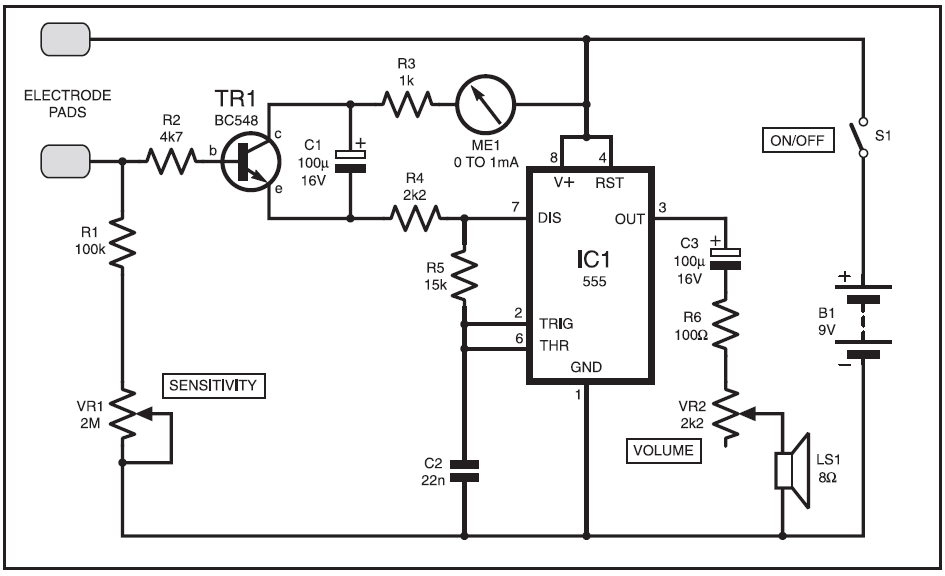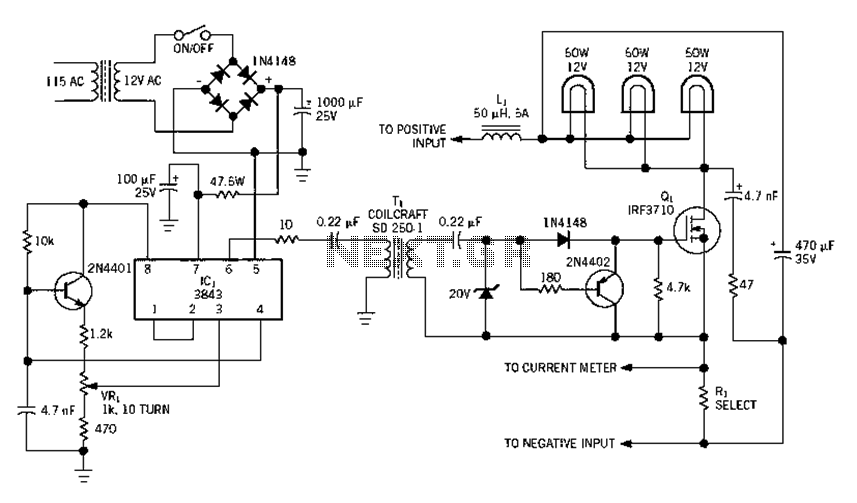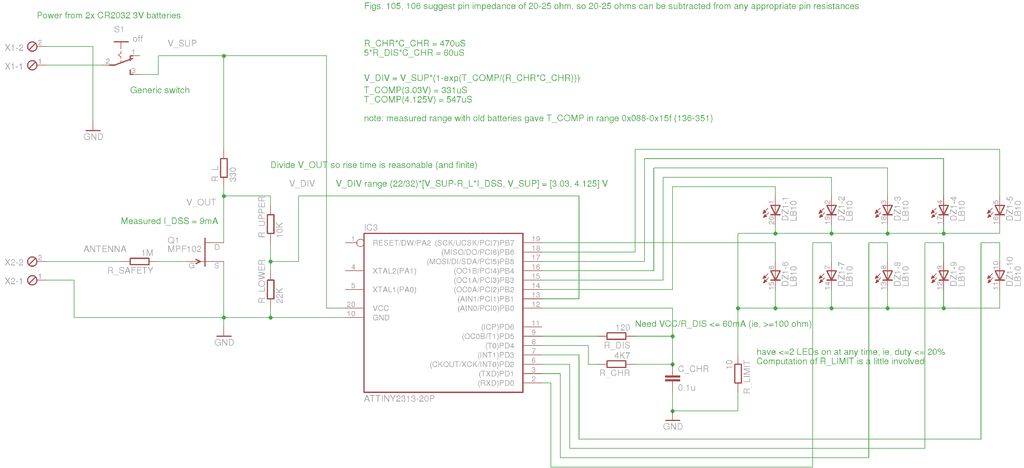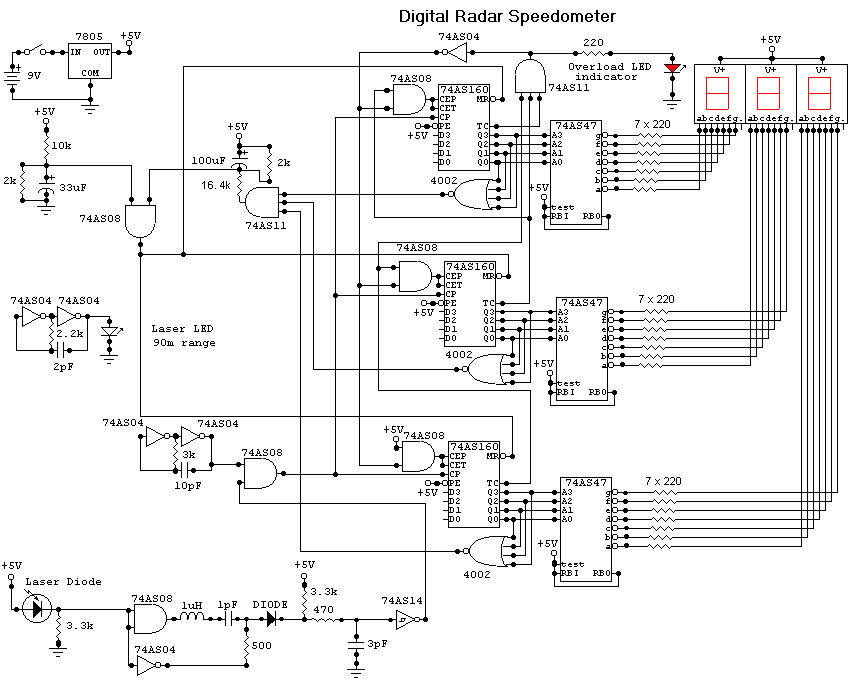
Field-strength meter circuit
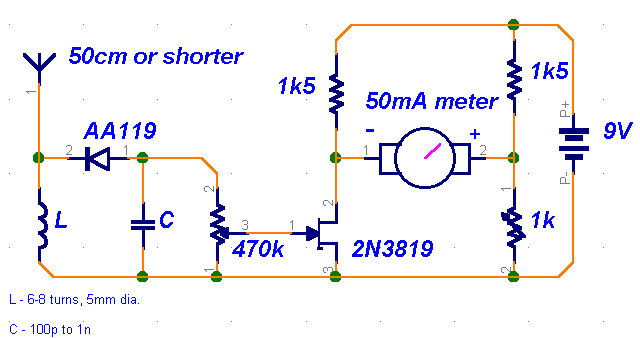
One cannot expect high performance from a basic detector-based meter. Its sensitivity is merely sufficient to provide a fundamental understanding of the power output that the transmitter can achieve.
The detector-based meter operates on a straightforward principle where it measures the power levels of a transmitter by detecting the electromagnetic fields generated. Typically, such meters are designed with a simple diode detector, which rectifies the RF signal to provide a readable output on a calibrated scale. The sensitivity of this type of meter is generally limited, meaning it may not accurately reflect the true power levels, especially in more complex transmission scenarios.
The construction of a basic detector-based meter involves a few key components: an antenna for capturing the RF signal, a diode for rectification, a filter circuit to smooth the output, and a display mechanism, often an analog needle or digital readout. The antenna is usually tuned to the frequency of interest, allowing the meter to pick up the relevant signals effectively.
In practical applications, while such a meter can provide a quick assessment of transmitter power, its limitations should be acknowledged. Factors such as frequency response, dynamic range, and calibration accuracy can affect the readings. For more precise measurements, advanced equipment such as a true power meter or spectrum analyzer would be recommended, as they can offer greater sensitivity and accuracy across a broader range of frequencies and power levels.
Overall, while a detector-based meter serves as a useful tool for basic assessments, it is not suitable for applications requiring high precision or detailed analysis of transmitter performance.You can`t expect great performance from such a simple detector-based meter. Sensitivity is just adequate enough to get a basic idea of the power that your transmitter is capable of.. 🔗 External reference
The detector-based meter operates on a straightforward principle where it measures the power levels of a transmitter by detecting the electromagnetic fields generated. Typically, such meters are designed with a simple diode detector, which rectifies the RF signal to provide a readable output on a calibrated scale. The sensitivity of this type of meter is generally limited, meaning it may not accurately reflect the true power levels, especially in more complex transmission scenarios.
The construction of a basic detector-based meter involves a few key components: an antenna for capturing the RF signal, a diode for rectification, a filter circuit to smooth the output, and a display mechanism, often an analog needle or digital readout. The antenna is usually tuned to the frequency of interest, allowing the meter to pick up the relevant signals effectively.
In practical applications, while such a meter can provide a quick assessment of transmitter power, its limitations should be acknowledged. Factors such as frequency response, dynamic range, and calibration accuracy can affect the readings. For more precise measurements, advanced equipment such as a true power meter or spectrum analyzer would be recommended, as they can offer greater sensitivity and accuracy across a broader range of frequencies and power levels.
Overall, while a detector-based meter serves as a useful tool for basic assessments, it is not suitable for applications requiring high precision or detailed analysis of transmitter performance.You can`t expect great performance from such a simple detector-based meter. Sensitivity is just adequate enough to get a basic idea of the power that your transmitter is capable of.. 🔗 External reference
